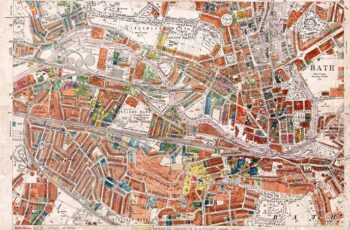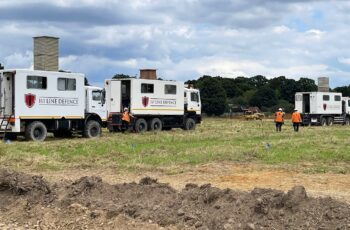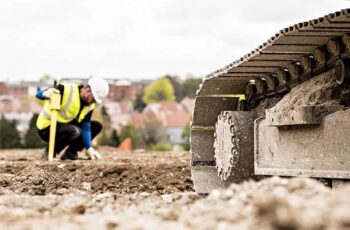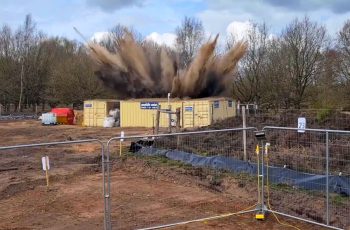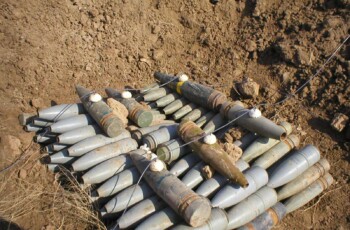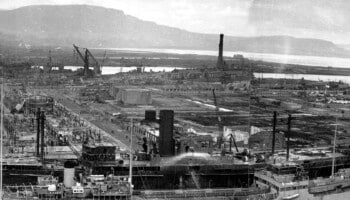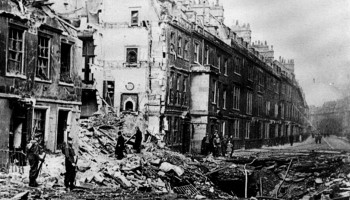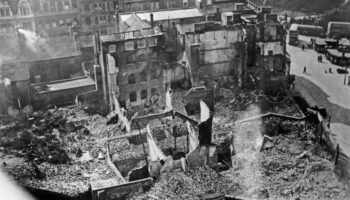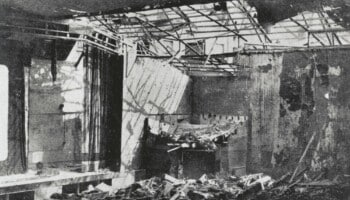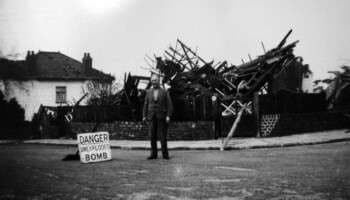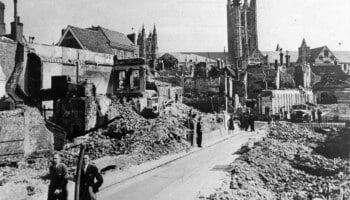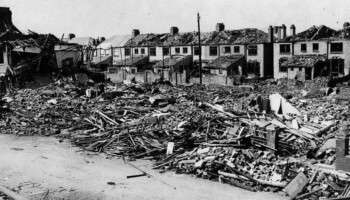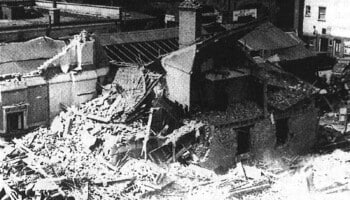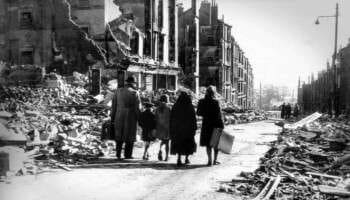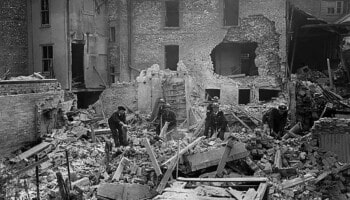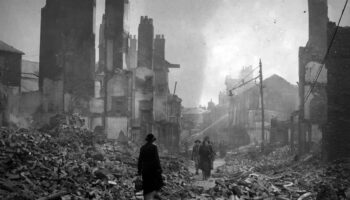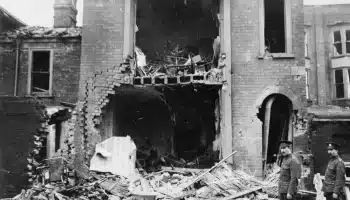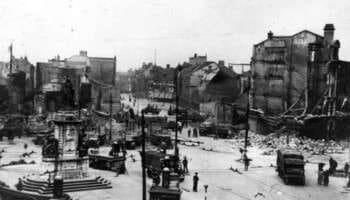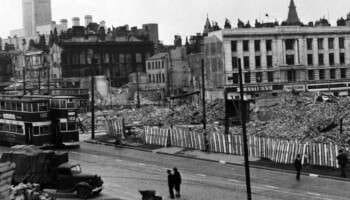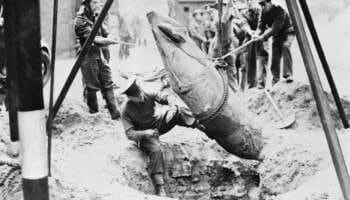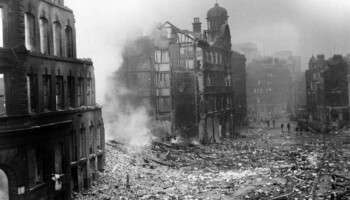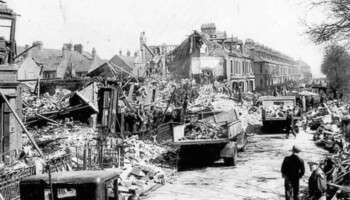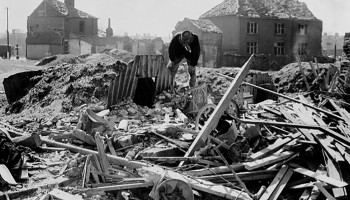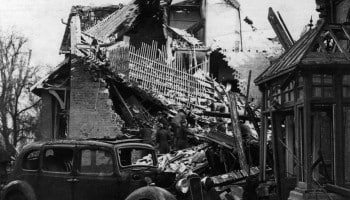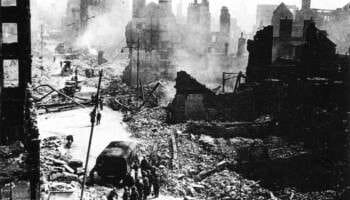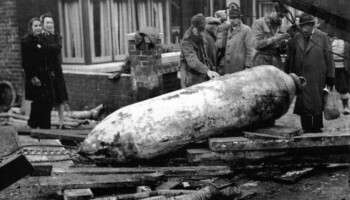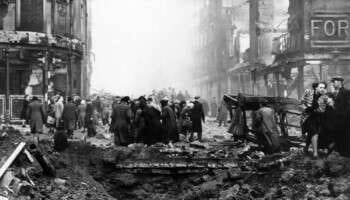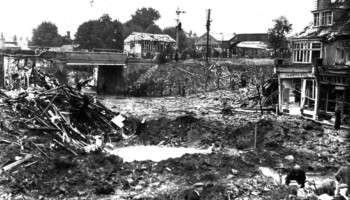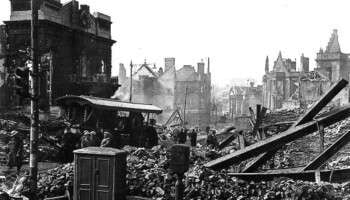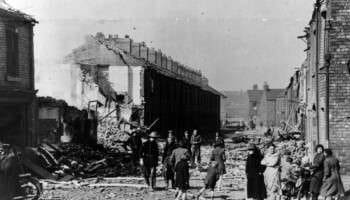Home » Resources » UXO City Guides »
UXO City Guide
Home Office Bombing Statistics for Coventry
Record of German Ordnance dropped on the County Borough of Coventry
High Explosive Bombs (All types)
3,373
Parachute Mines
50
Oil Bombs
2
Phosphorus Bombs
0
Fire Pots
0
Pilotless Aircraft (V-1)
0
Long-range Rocket Bombs (V-2)
0
Weapons Total
3,425
Area Acreage
19,137
Number of items per 1,000 acres
179
Why was Coventry targeted and bombed in WWII?
Beginning in the Victorian period, Coventry established itself as one of the country’s most industrious manufacturing hubs, and by the 1930’s was home to the majority of Britain’s automotive industry. During wartime, these companies were tasked with the production of military vehicles and equipment, a fact that German military intelligence foresaw.
As such, a number of key areas and factories within the city were designated as strategic bombing targets for the Luftwaffe.
Home Office Bombing Statistics for Coventry
Details obtained from the official Home Office bombing statistics, indicates the quantity and type of bombs that fell on the County Borough of Coventry during WWII (excluding incendiary bombs).
A total of 3,425 recorded bombs fell on the County Borough of Coventry, equating to 179 items of ordnance per 1,000 acres.
Major bombing raids in Coventry
RAF Ansty, to the east of Coventry was the first area to be bombed on the 25th June 1940, whilst the first main raid on the city was in August 1940. Sporadic raids continued until 14th November 1940, when the first and most destructive concentrated raid took place. Codenamed Operation Mondscheinsonate (Moonlight Sonata), this raid was intended to destroy Coventry’s industrial heart, targeting the main automotive and manufacturing works in the city.
This raid was one of the first that utilised radar navigation, which combined with the scale of the raid made it especially accurate and devastating – it was the single most concentrated raid on a British city during WWII.
During this one raid, over 4,300 homes were destroyed, and overall two-thirds of the cities buildings sustained some degree of damage. The most notable casualties were the medieval cathedral, Daimler factory, Humber Hillman factory and the Alfred Herbert machine works in Coventry.
Throughout the war, Coventry sustained some of the worst damage per square mile of any British city. The 41 air raids comprising the ‘Coventry Blitz’ claimed some 1,236 casualties, over 41,000 damaged or destroyed properties and 111 of 180 factories were damaged – including 75 which were completely destroyed.
Perhaps the most heavily bombed single structure in Coventry was the Daimler Factory in Radford, which during WWII was engaged in war work, manufacturing armoured cars, aircraft engines and small arms – including the famous Bren Light Machinegun1.
Over the course of the war the factory was struck by 150 HE bombs, three Parachute Mines, 17 delayed action bombs and numerous incendiaries. As a result, the factory was out of action for a number of periods during the war, with production moved to other ‘shadow factories’ outside of the city to ensure its important work could continue.
By the end of 1941, the Radford site was so heavily damaged that production of the Daimler Dingo and Daimler Armoured car was moved to the BSA plant in Birmingham.
To record the bombing, the City Architects Office produced a number of bomb survey maps and war damage reports, which (as seen below) roughly indicate the areas within the city that were bombed or sustained bomb damage.
Unfortunately, these records only cover the two largest raids, meaning that records for a number of other raids are not available. As such, the bomb damage records for Coventry tend to be mixed. While inner city areas are well covered for the most part, records for the suburbs are lacking and sometimes do not provide any coverage at all.
Can UXO still pose a risk to construction projects in Coventry?
The primary potential risk from UXO in Coventry is from items of German air-delivered ordnance, which failed to function as designed. Approximately 10% of munitions deployed during WWII failed to detonate, and whilst efforts were made during, and after the war to locate and make UXBs safe, not all items were discovered. This is evidenced by the regular, on-going discoveries of UXO during construction-related intrusive ground works across the UK – not just in Coventry.
Occasionally items of British explosive ordnance are also encountered within inner city areas, including Coventry. In Coventry’s case, the city was defended by a ring of static AA defences as well as a number of mobile AA batteries that rotated around parks and open areas of the city to avoid being targeted.
These AA batteries would have been in constant action during these raids, and as such a volume of AA shells would have been fired over Coventry’s skies, some of which may not have functioned as intended.
I am about to start a project in Coventry, what should I do?
Developers and ground workers should consider this potential before intrusive works are planned, through either a Preliminary UXO Risk Assessment or Detailed UXO Risk Assessment. This is the first stage in our UXO risk mitigation strategy and should be undertaken as early in a project lifecycle as possible in accordance with CIRIA C681 guidelines
It is important that where a viable risk is identified, it is effectively and appropriately mitigated to reduce the risk to as low as reasonably practicable (ALARP). However, it is equally important that UXO risk mitigation measures are not implemented when they are not needed.
While there is certainly potential to encounter UXO during construction projects in Coventry, it does not mean that UXO will pose a risk to all projects. Just because a site is located in Coventry does not mean there is automatically a ‘high’ risk of encountering UXO. It really does depend on the specific location of the site being developed.
A well-researched UXO Risk Assessment will take into account location specific factors – was the actual site footprint affected by bombing, what damage was sustained, what was the site used for, how much would it have been accessed, what were the ground conditions present etc.
It should also consider what has happened post-war – how much development has occurred, to what depths have excavations taken place and so on. This will allow an assessment of the likelihood that UXO could have fallen on site, gone unnoticed and potentially still remain in situ.
Recent UXO discoveries in Coventry
Since the war, many items of UXO have been discovered across multiple cities within the UK, with Coventry no exception. See the news articles below about UXO incidents and discoveries from national and local press in Coventry.
1st Line Defence keep up-to-date with relevant and noteworthy UXO-related news stories reported across the UK, and you can browse through these articles using the buttons below.
Get UXO risk mitigation services from a partner you can trust
UXO City Guides
Got a project in Coventry? Not sure if there is a UXO risk? Need advice but not sure where to start?
If you need general advice about UXO risk mitigation in Coventry, contact us and we will be happy to help.
Contact Us
* indicates required fields
